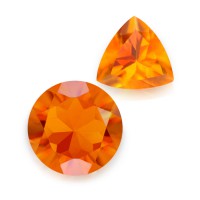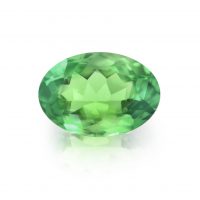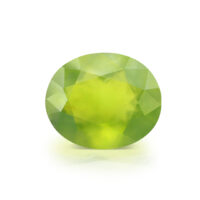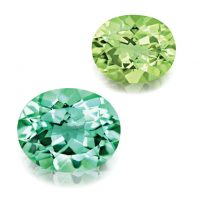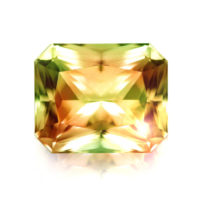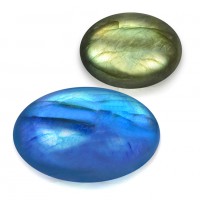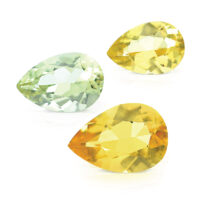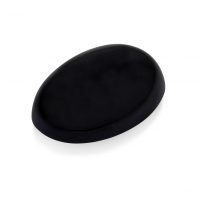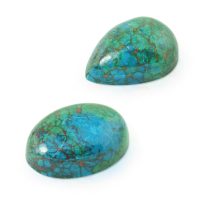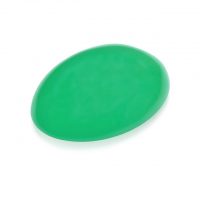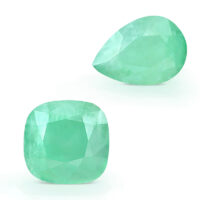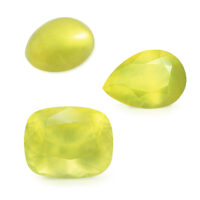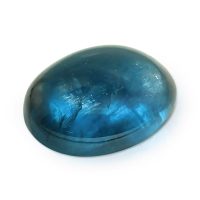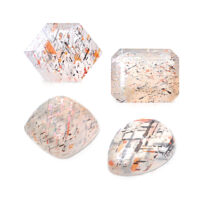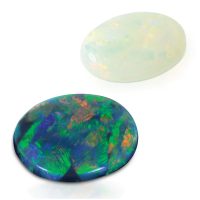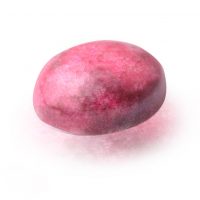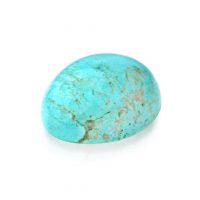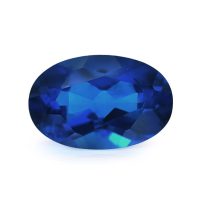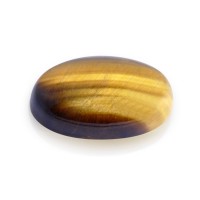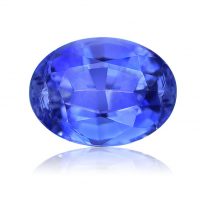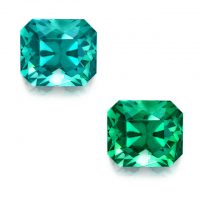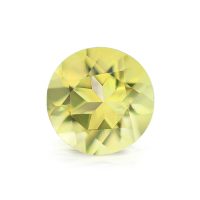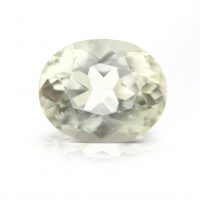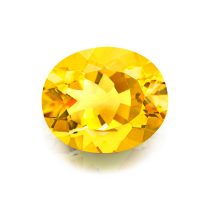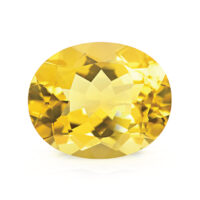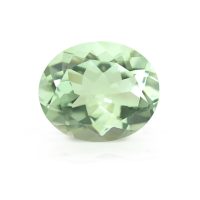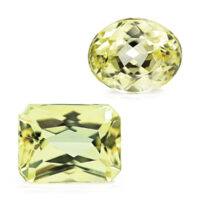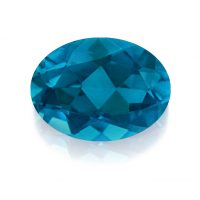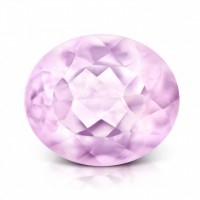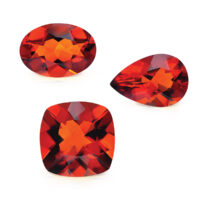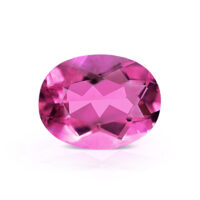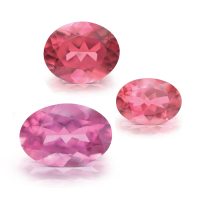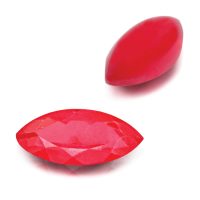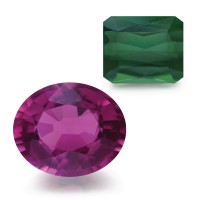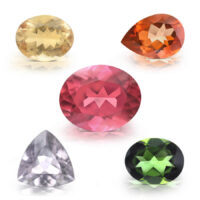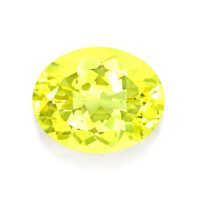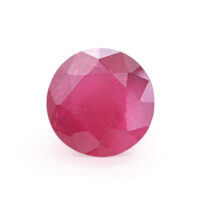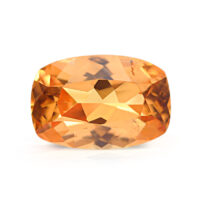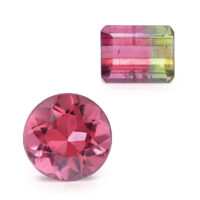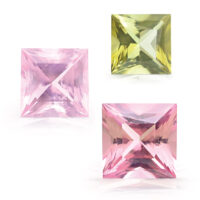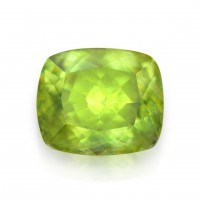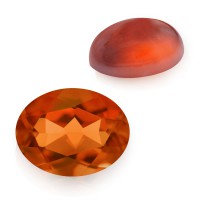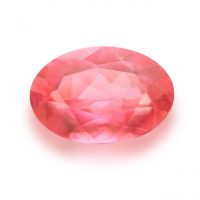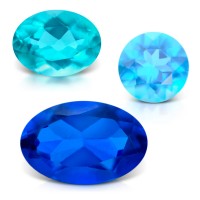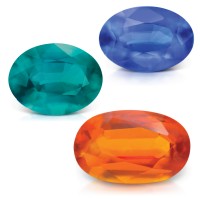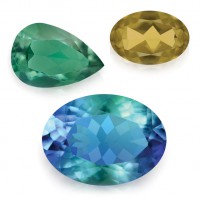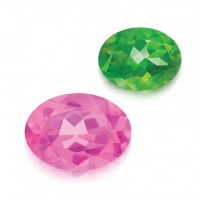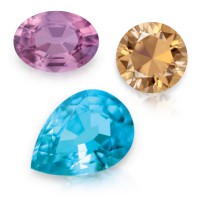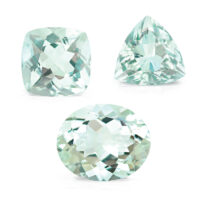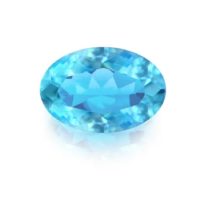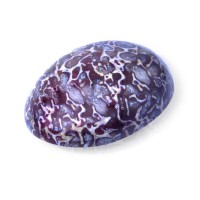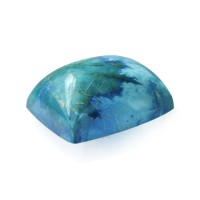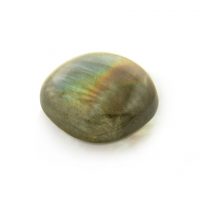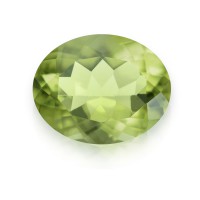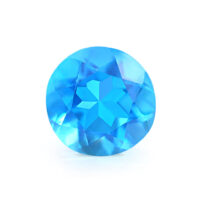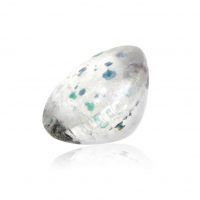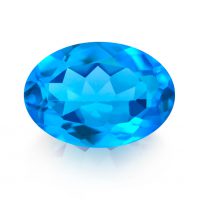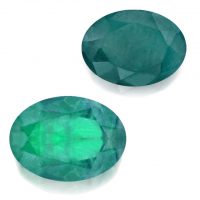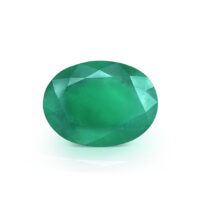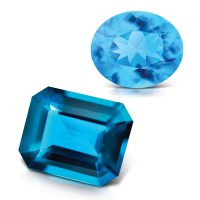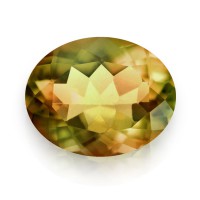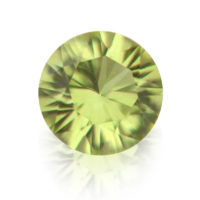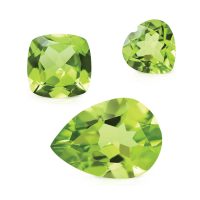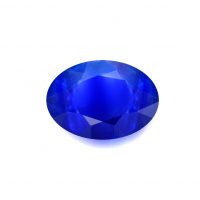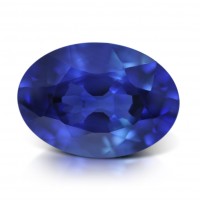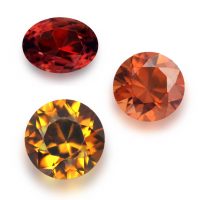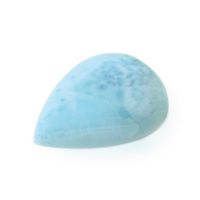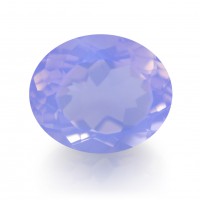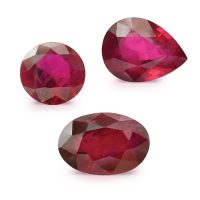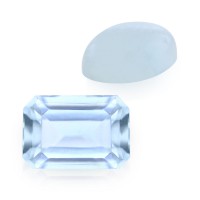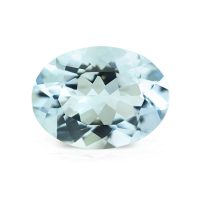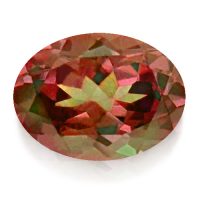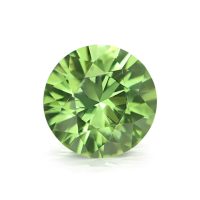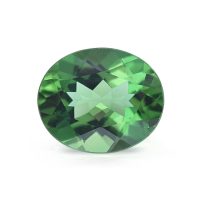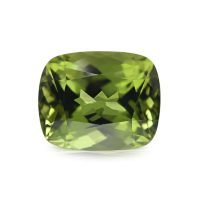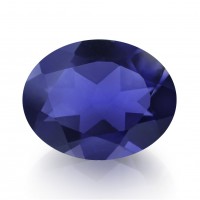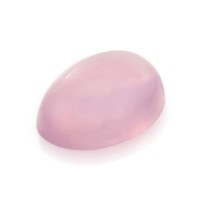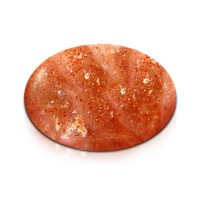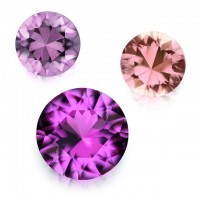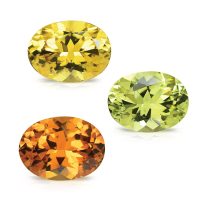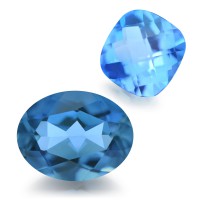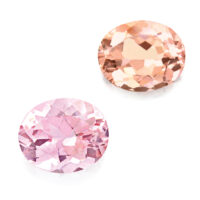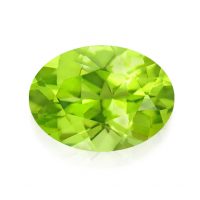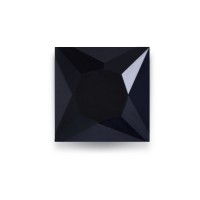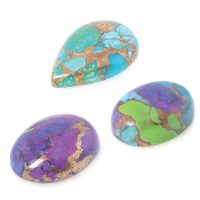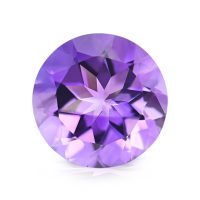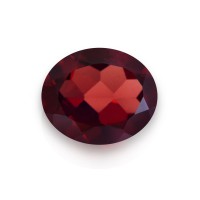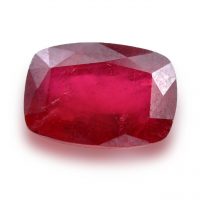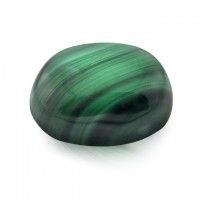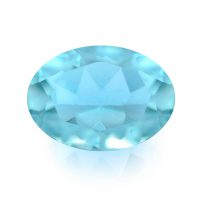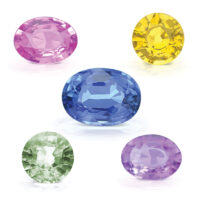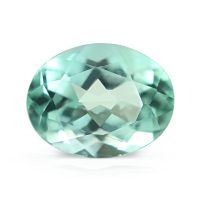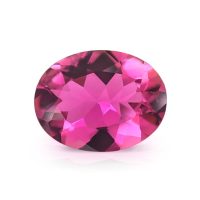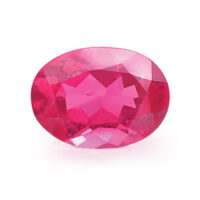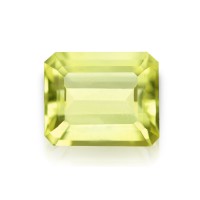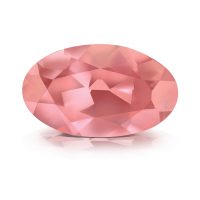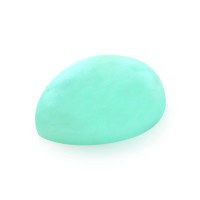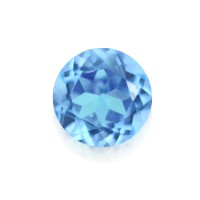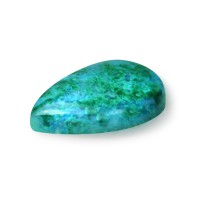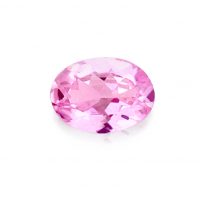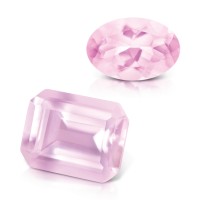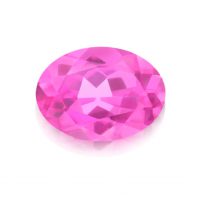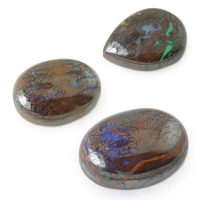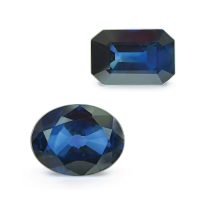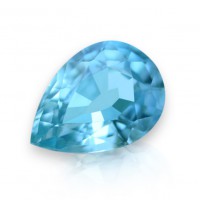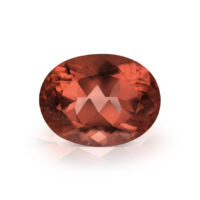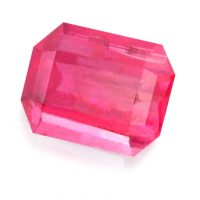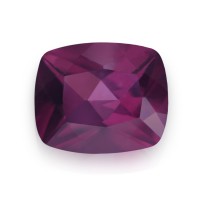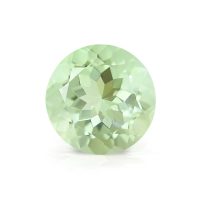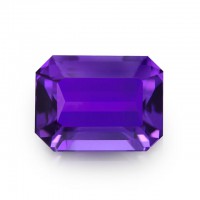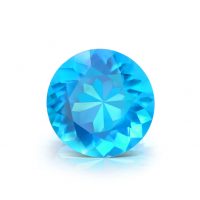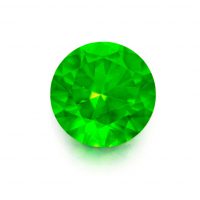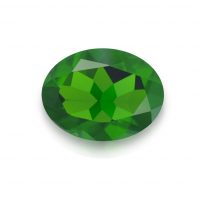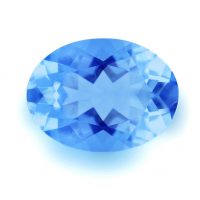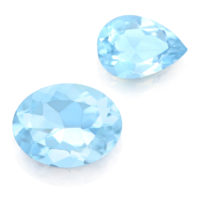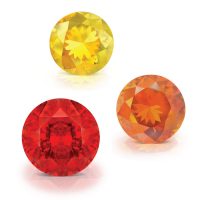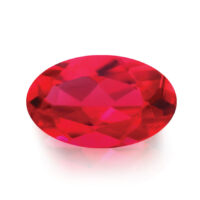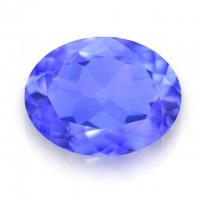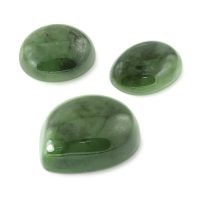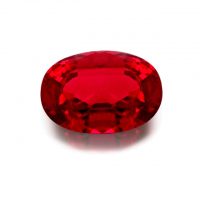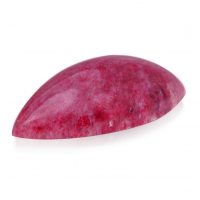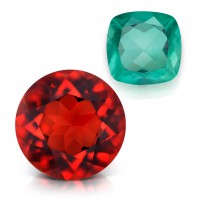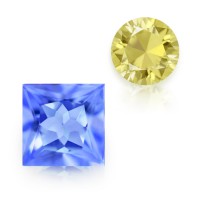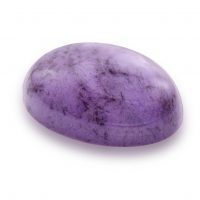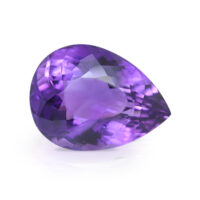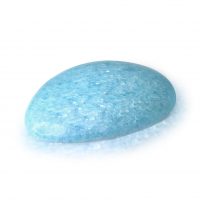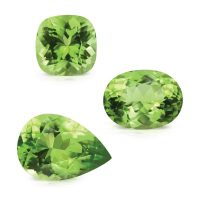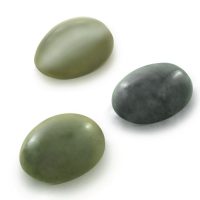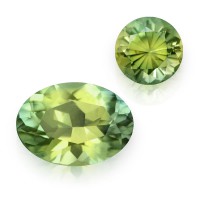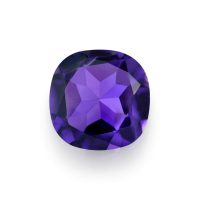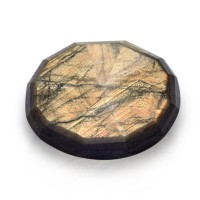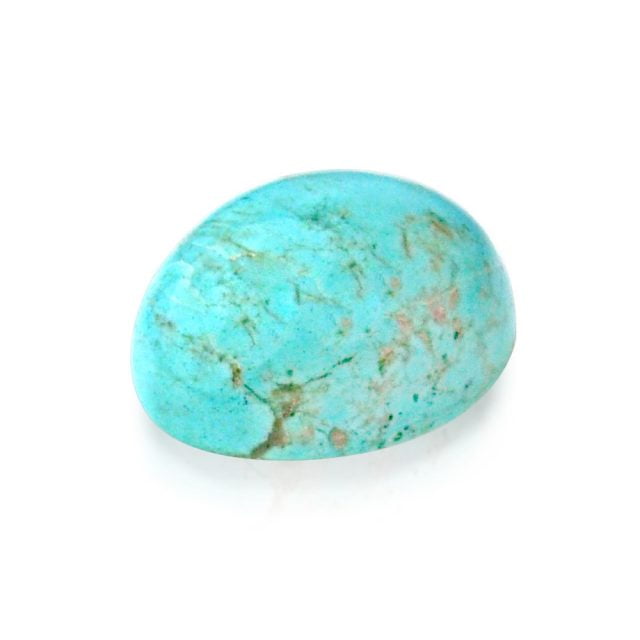

An ancient gemstone, blessed with a rich and colorful history, Turquoise’s characteristic color and patterns fabulously complements any fashion, personality or style. Undeniably one of the world’s rarest and most intriguing Turquoises, Australian Turquoise showcase stunning blues with beautiful mottling, coming from Broken Hill in the Australian state of New South Wales. First cut in the mid to late 90s, our jewelry collections feature the very last of this impossibly rare and virtually unknown Antipodean gemstone. Absolutely critical for a gem where well-over 90 percent are heavily enhanced, Australian Turquoise’s beauty is totally natural, accentuating desirability, rarity, and value.
Hardness 5 - 6
Refractive Index 1.610 - 1.650
Relative Density 2.31 - 2.84
Enhancement None
Beauty
Australian Turquoise features attractive bright-pastel blues, brilliant-medium sky blues, and rich robin’s egg blues, wonderfully augmented by beautiful mottled, swirling ‘egg-shell’ and ‘spider web’ vein patterns of coffee and chocolate matrix (host rock).
Normal for Turquoise and very attractive, whether you choose mottling is up to personal taste, noting attractive and well-balanced patterns don’t affect Turquoises’ value. Simply determine your preference by assessing the gems’ overall appearance, along with its color and mottling. Optimally cut as cabochons (cut in convex form and highly polished, but not faceted), Australian Turquoise is carefully finished into attractive smooth domes with a desirable proportion, shape, symmetry, and a superior polish that displays an excellent luster. Each gem has its own beautiful patterns, making every Australian Turquoise uniquely individual.
Turquoise is a true cultural chameleon, appearing in some of the world’s most significant civilizations. While Egyptians, Mesopotamians (modern-day Iraq), Persians (modern-day Iran), Mongols, Tibetans, Chinese and Native Americans all greatly valued Turquoise, the two geographic areas forever linked with this gemstone are the Middle East and the Americas. Today, Turquoise is Iran’s national gemstone and also strongly associated with Native American jewelry, such as Zuni bracelets and Navajo belts.
Despite its long history, Turquoise wasn’t always called Turquoise. In Persian, the gem is called ‘ferozah’, which means ‘victorious’, and until the 13th century in Europe it was called ‘calläis’ (beautiful stone), probably from the Roman gem names ‘callainos’ or ‘callaina’. While some mineralogists and gemstone authors think these names represented our Turquoise during antiquity, others disagree.
Its delightful color aside, Turquoise’s rich history and mythology are probably due to it being one of the first gemstones ever mined. Mining Turquoise dates back to 6000 BC in Egypt and 5000 BC in Persia. In fact, a Turquoise and gold bracelet excavated in 1900 from the tomb of the Egyptian Queen Zer (5500 BC) is one of the world’s oldest pieces of jewelry. In the Americas, the Aztecs began mining Turquoise in Mexico around 900 AD and created elaborate Turquoise mosaics. The Mayans, Anasazi, Zuni, Navajo and Apache people were so taken by the beauty of Turquoise that by the 16th century ingenious cultures in the American southwest were using it as currency. The treasure of Moctezuma II (1466-1520), the ninth Aztec emperor and ruler at the beginning of the Spanish conquest, includes a serpent carving covered by a mosaic of Turquoise. Despite Theophrastus (the successor of Aristotle’s school of philosophy) noticing the gem in the spoils brought home from Persia by Macedonian soldiers, Turquoise did not make a big impact on European fashion until the Middle Ages.
A gemstone of prosperity in many cultures from the Persians to the Apache, Turquoise is purported to lighten or darken in color based on the mood or health of its wearer. While such ability was historically attributed to many gemstones, in his book ‘Gemmarum et Lapidum Historia’ published in 1609, Anselmus de Boodt claims that Turquoise grew paler as its wearer sickened, lost its color entirely on their death, but recovered when worn by a new, healthy owner. He also claimed if the wearer fell, the Turquoise would crack in place of their bones, which seems fanciful, but he was also fashion orientated stating, “…no gentleman thought his hands properly ornamented, or his elegance complete, without the acquisition of a fine Turquoise”.
One of December’s birthstones, Turquoise is a hydrated phosphate of copper and aluminum coming in various intensities of blue and greenish-blue often mottled with black, brown, gold, and yellow veins of matrix (host rock), typically brown limonite or black manganese oxide. Turquoise’s modern name is a bit of a misnomer. When Venetian merchants brought the gem to France, it was called ‘pierre turquois’ (Turkish Stone), despite its Persian not Turkish origin, although it did originally reach Europe from Iran via Turkey. Today, the name ‘Turquoise’ is synonymous with both its unique color and the gemstone.
Rarity
While Nishapur (Neyshabur) in Iran, by historical reputation and experience, is still regarded as one of Turquoise’s premium sources, today, fine Turquoise is also commercially mined in the USA (Arizona and Nevada), and China. Deposits throughout Australia do occasionally yield high-quality, fine Turquoise, but unfortunately, not in consistent commercial quantities, mostly unearthing mineral specimens.
While Turquoise mineral deposits have been found in many Australian states, including New South Wales, Northern Territory, Queensland, South Australia, Tasmania, Victoria, and Western Australia, these extremely limited occurrences do not occur in high quantities or good qualities, with most crystals incapable of being fashioned into gemstones.
Discovered during copper mining surveys around 1978, Australian Turquoise is from a unique deposit near Broken Hill in New South Wales that was worked until 1996. While eleven 44-gallon drums of Australian Turquoise were mined, only three yielded gem-quality (approximately 27 percent); the remaining Turquoise crystals were simply too powdery for lapidary. Thankfully, recent advances in medical micro-abrasive technology is maximising lapidary yields for the little Australian Turquoise that remains.
Australian Turquoise’s beauty is also totally natural and unenhanced, which is significant for a gemstone variety where over 90 percent is assembled, dyed and/or stabilized.
Durability & Care
A durable jewelry gemstone, Australian Turquoise (Mohs’ Hardness: 5 – 6) should always be stored carefully to avoid scuffs and scratches. Clean with gentle soap and lukewarm water, scrubbing behind the gem with a very soft toothbrush as necessary. After cleaning, pat dry with a soft towel or chamois cloth.
Map Location
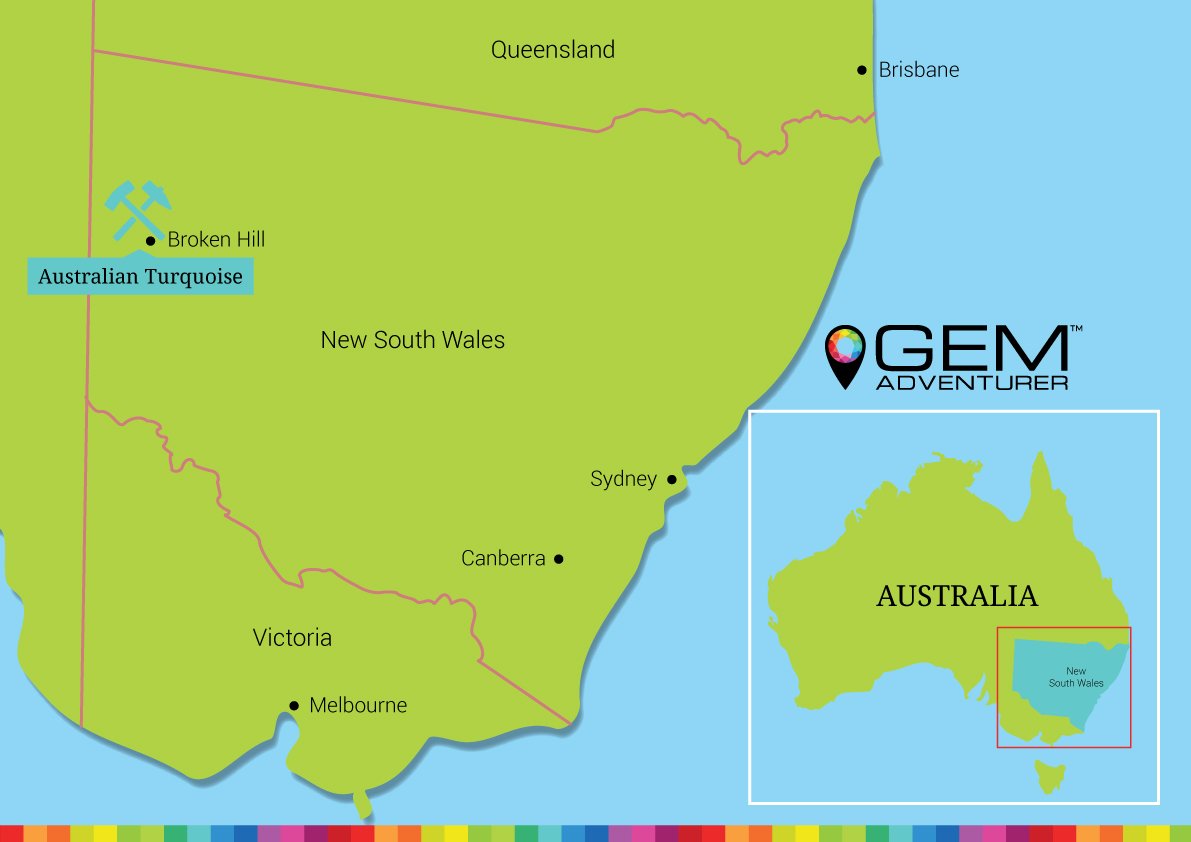
Click map to enlarge
